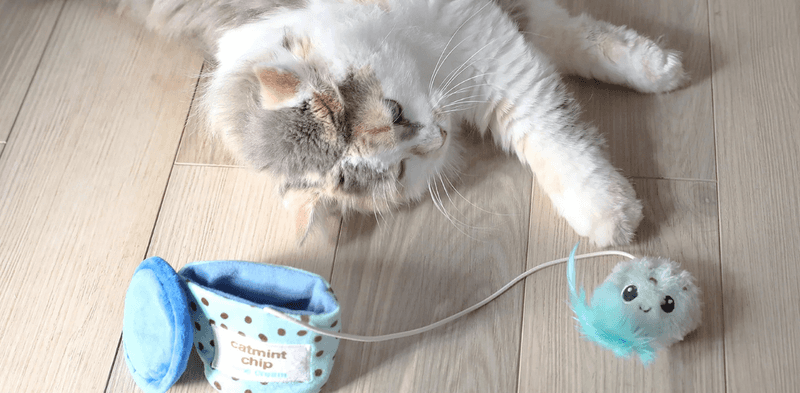📖 Table of Content:
Cats may be small and soft, but their instincts can be fierce when it comes to protecting what they consider their own. Whether it’s a patch of sunlight on the couch, a favorite human, or the entirety of your home, some felines will go to great lengths to guard their domain. Territorial behavior in cats is natural, but when it starts to cause tension, aggression, or anxiety, it’s time for a compassionate response that respects both their instincts and your peace of mind.
Understanding feline territoriality means seeing the world through your cat’s eyes. They perceive intrusions—be it a new pet, visitor, or even a rearranged room—as potential threats. This can lead to defensive posturing, aggressive behavior, or withdrawal. Instead of reacting with frustration, a more productive approach is to gently guide your cat toward feeling secure. With time and consistency, many cats can adjust to changes without losing their sense of safety or control.
This article offers eight thoughtful, cat-friendly strategies to help manage territorial behavior without punishment or fear. These techniques not only support your cat’s emotional well-being but also foster a stronger bond between you and your feline companion. Each tip is designed with sensitivity and practicality in mind, grounded in the latest understanding of feline psychology. Read on to discover gentle solutions that honor your cat’s needs and bring balance back into your shared space.
1. Understand the Triggers
Recognizing what sparks your cat’s territorial behavior is the first step toward resolving it. Every cat has its own perception of threats, and what seems minor to you might feel monumental to them. Triggers can range from a new animal in the house to a visiting friend or even a shift in your daily routine. Observation is your most powerful tool here—take note of when the behavior starts, who or what is nearby, and any changes in the environment. Avoid jumping to conclusions; sometimes the root cause is more subtle than it appears. By identifying patterns, you can begin to isolate the elements that unsettle your cat. Armed with this insight, your interventions can be both effective and respectful of your cat’s instincts.
2. Create Safe Spaces
Giving your cat a designated refuge can make a world of difference in how they respond to stress. These safe spaces serve as a physical boundary where your cat knows it won’t be disturbed or challenged. Ideally, choose a quiet area of your home with vertical height options, like shelves or cat trees, to provide a sense of control. Add familiar bedding, toys, and perhaps an item with your scent to make it feel secure. This space should be off-limits to other pets and children during periods of heightened territoriality. The more your cat trusts this area as a retreat, the less likely it is to lash out elsewhere. Over time, the security provided by this zone can help reduce the perceived need for aggressive defense.
3. Use Scent to Reduce Anxiety
Scents play an enormous role in how cats understand and claim their surroundings. When they rub their cheeks on furniture or humans, they’re depositing pheromones that signal familiarity and comfort. You can harness this behavior by using items that smell like your cat—blankets, toys, or scratchers—in any new or stressful environment. In more severe cases, synthetic pheromones like Feliway can mimic natural calming signals and reduce tension. Introducing new animals? Swap bedding or toys between them before direct contact, allowing them to exchange scents without confrontation. Avoid over-cleaning areas your cat marks with scent, as this can strip away their sense of ownership. By reinforcing familiar smells, you’re telling your cat the environment is still theirs, even amidst change.
4. Slowly Introduce New Pets or People
Gradual introductions are key when your cat perceives a new presence as a threat. Rushing the process may lead to defensive or hostile behavior that could take weeks to undo. Begin with scent swapping, letting each animal or person grow familiar with the other’s smell before any direct interaction. Next, allow short, supervised meetings where both can retreat if needed, minimizing perceived danger. Reward calm behavior with treats and praise, reinforcing a positive experience. Keep interactions brief at first, and don’t force proximity—let curiosity unfold naturally. Patience is vital, as each cat’s timeline for acceptance will differ based on temperament and history.
5. Maintain Routine and Territory Boundaries
Consistency provides comfort in the chaotic world of a territorial cat. Feeding, playtime, and litter box maintenance should follow a predictable schedule to reduce anxiety. Sudden disruptions—like moving furniture or bringing in new pets—can unsettle your cat’s perceived control over their environment. If changes must occur, try to introduce them gradually and counterbalance with extra attention or treats. Define specific zones where your cat feels ownership, and avoid letting other animals or visitors infringe on those areas initially. Using visual boundaries like furniture placement or even baby gates can help reinforce these territories. Over time, this predictability can soothe your cat’s instincts and encourage calm coexistence.
6. Engage in Daily Play and Mental Stimulation
Active engagement can significantly reduce territorial aggression by redirecting your cat’s energy. Use toys that mimic prey behavior—like feather wands or toy mice—to tap into their natural hunting instincts in a healthy way. Schedule interactive play sessions at least once or twice daily to create a structured outlet for tension. Puzzle feeders, treat mazes, and scent-based games can provide mental challenges that stimulate the brain. Keep the environment enriching with new toys, climbing spaces, or window perches to maintain interest. A busy cat has less time or energy to guard territory obsessively. Engagement also strengthens your bond, helping your cat feel emotionally secure and less reactive.
7. Use Positive Reinforcement
Rewarding calm, non-aggressive behavior reinforces your cat’s sense of safety and trust. Instead of punishing them for territorial outbursts—which can backfire—focus on catching them being good. Offer treats, gentle petting, or playtime when they behave peacefully around perceived threats. Clicker training is a powerful tool to associate certain behaviors with positive outcomes, especially for anxious or reactive cats. Keep sessions short and fun, never forceful or rushed. Avoid yelling or physical correction, as this will only increase fear and resistance. Over time, consistent positive reinforcement can reshape your cat’s reactions in a gentle, lasting way.
8. Consult a Veterinarian or Behaviorist
Seeking professional help doesn’t mean you’ve failed—it shows you’re committed to your cat’s well-being. If your efforts at home aren’t resolving the behavior or if aggression escalates, a vet should first rule out medical issues like pain or hormonal imbalances. Once physical causes are excluded, a certified feline behaviorist can evaluate the specific dynamics at play in your home. These experts provide tailored advice, training plans, and sometimes even home visits to assess the full picture. Behavioral issues are complex and often rooted in more than one cause. A professional can help you untangle those threads and find workable solutions. Don’t hesitate to get support—early intervention can make a major difference.








